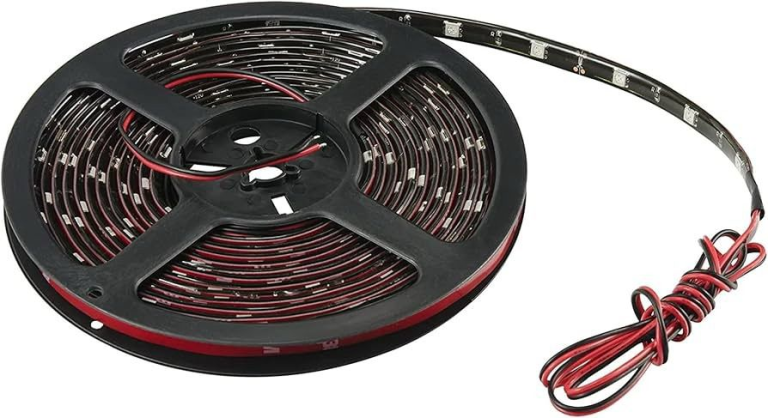
Lighting has the power to completely transform a home. It defines mood, enhances décor, and brings spaces to life. Among modern lighting solutions, LED lighting stands out as one of the most versatile and energy-efficient options available today. Whether you’re designing a minimalist apartment or a luxurious villa, LED lights can adapt beautifully to every corner, accentuating architectural features and creating ambiance that feels both elegant and functional.
As interior design evolves, LED lighting has become more than just a practical LED Module manufacturer necessity — it’s a creative tool that allows homeowners and designers to craft visually stunning and comfortable living environments.
1. The Evolution of Home Lighting
Traditional lighting systems often focused purely on brightness, neglecting factors like energy efficiency and design flexibility. However, with the introduction of LED technology, home lighting has entered a new era of innovation.
LEDs offer an impressive lifespan, minimal energy consumption, and endless customization possibilities. They can be integrated into ceilings, walls, furniture, or even floors, blending seamlessly into interior design while enhancing both aesthetics and functionality.
Their compact size allows for hidden installations, creating clean, modern looks that were once difficult to achieve with bulky fixtures or incandescent bulbs.
2. Creating Mood and Atmosphere
Lighting is one of the most effective tools for shaping mood within a home. Soft, warm LED lighting can make living areas feel cozy and inviting, while cooler tones create a sense of freshness and clarity.
LEDs can also be dimmed or color-tuned to suit different times of day or activities. For example, bright white light is ideal for morning routines, while gentle amber tones work beautifully for relaxing evenings.
By strategically layering lighting — combining ambient, task, and accent sources — homeowners can create balanced environments that support every moment, from work to relaxation.
3. Accentuating Architectural Details
One of the greatest advantages of LED lighting is its ability to highlight the unique features of a space. Hidden strip lights along coves, staircases, or under cabinets can draw attention to design elements without overpowering them.
In modern homes, recessed LED spotlights bring out textures in materials such as brick, wood, and stone. In classic interiors, elegant LED chandeliers can provide a focal point while maintaining energy efficiency.
Architectural lighting with LEDs allows designers to guide the eye, define space, and add a sense of drama or sophistication to any room.
4. Function Meets Aesthetic
LED lighting doesn’t just enhance beauty — it also improves everyday functionality. Task lighting in kitchens, bathrooms, or workspaces ensures safety and visibility, while ambient lighting in living rooms and bedrooms supports comfort and relaxation.
LED strips beneath shelves or inside closets add convenience without clutter. Meanwhile, smart LED systems give homeowners complete control through mobile apps or voice commands, making it easier than ever to adjust brightness or color temperature according to preference.
By merging practicality with design appeal, LEDs embody the perfect balance between form and function in modern interior design.
5. Sustainability and Energy Efficiency
Sustainability is at the heart of contemporary home design, and LED lighting aligns perfectly with this philosophy. LEDs consume up to 80% less energy than traditional bulbs and have a significantly longer lifespan.
Their reduced heat output also means less strain on air conditioning systems, contributing to overall energy savings. For eco-conscious homeowners, LEDs provide an easy yet impactful way to reduce carbon footprints while maintaining beautiful illumination.
Over time, the lower electricity bills and fewer replacements make LED lighting a smart investment for both the planet and your wallet.
6. Endless Design Possibilities
LED lighting opens doors to creativity. With flexible LED strips, homeowners can add light to unexpected places — behind mirrors, under furniture, or along hallways. RGB LED options even allow color customization for parties, celebrations, or simply to match mood and décor.
Ceiling-mounted LED panels create soft, uniform light that mimics daylight, while pendant fixtures add elegance and character to dining or lounge areas.
Designers often combine multiple LED sources to create depth and contrast, making spaces appear larger, brighter, and more harmonious.
Conclusion
LED lighting has redefined what’s possible in home interior design. It blends practicality, beauty, and sustainability to create environments that feel both functional and inspiring.
From highlighting architectural details to setting the perfect mood, LEDs offer flexibility that complements any style or purpose. Their energy efficiency and longevity make them not only a modern trend but also a long-term investment in comfort and sustainability.
In today’s homes, LED lighting is more than illumination — it’s an art form that transforms ordinary spaces into extraordinary experiences.
